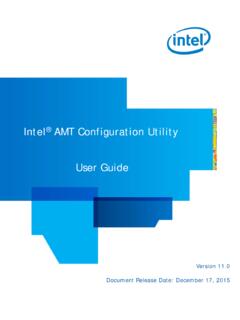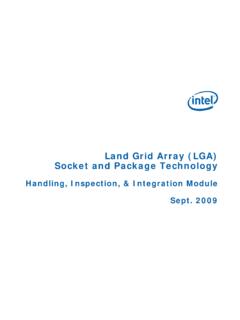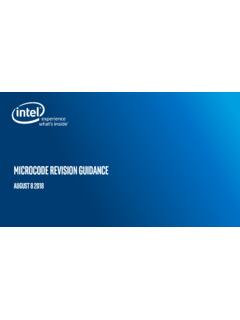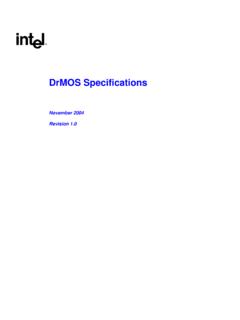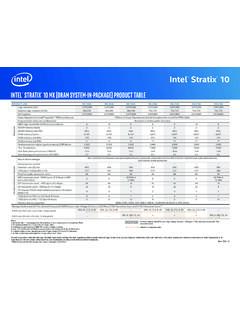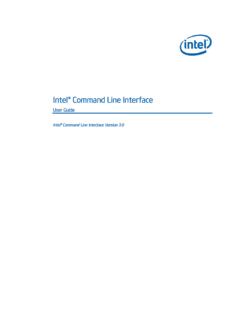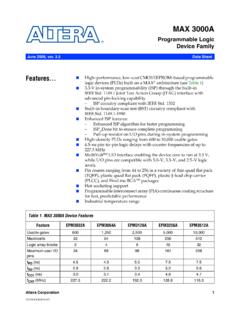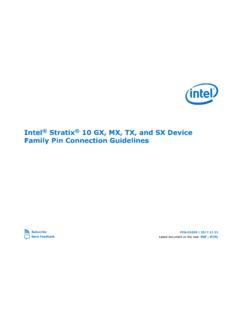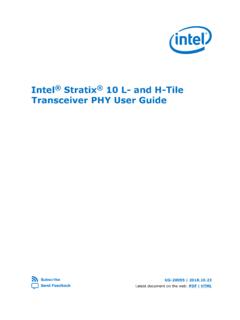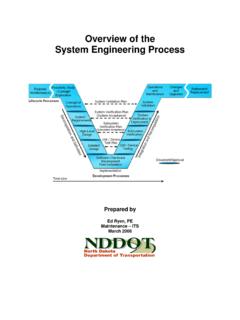Transcription of Maximizing File Transfer Performance: Using 10Gb ... - Intel
1 Case study Intel Xeon processor 5500 series Virtualization Maximizing File Transfer performance Using 10Gb Ethernet and Virtualization A FedEx Case Study the Challenge Spiraling data center network complexity, cable maintenance and troubleshooting costs, and increasing bandwidth requirements led FedEx Corporation to investigate techniques for simplifying the network infrastructure and boosting file Transfer throughput. FedEx Corporation is a In response to this challenge, FedEx in collaboration with Intel conducted a case study to determine the most effective approach to achieving near-native 10-gigabit worldwide information and file Transfer rates in a virtualized environment based on VMware vSphere* ESX* 4. business solution company, with a running on servers powered by the Intel Xeon processor 5500 series.
2 The servers were equipped with Intel 10 Gigabit AF DA Dual Port Server Adapters supporting superior portfolio of transportation direct-attach copper twinaxial cable connections. For this implementation, Intel Virtual and delivery services. Machine Device Queues (VMDq) feature was enabled in VMware NetQueue*. File Transfer applications are widely used in production environments, including replicated data sets, databases, backups, and similar operations. As part of this case study, several of these applications are used in the test sequences. This case study: Investigates the platform hardware and software limits of file Transfer performance Identifies the bottlenecks that restrict Transfer rates Evaluates trade-offs for each of the proposed solutions Makes recommendations for increasing file Transfer performance in 10 Gigabit Ethernet (10G) native Linux* and a 10G VMware virtualized environment The latest 10G solutions let users cost-effectively consolidate the many Ethernet and FibreChannel adapters deployed in a typical VMware ESX implementation.
3 VMware ESX, running on Intel Xeon processor 5500 series-based servers, provides a reliable, high- performance solution for handling this workload. The Process In the process of building a new data center, FedEx Corporation, the largest express shipping company in the world, evaluated the potential benefits of 10G, considering these key questions: Can 10G make the network less complex and streamline infrastructure deployment? Can 10G help solve cable management issues? Can 10G meet our increasing bandwidth requirements as we target higher virtual machine (VM) consolidation ratios? Cost Factors today. Using two 10G connections can from GbE to 10 GbE, as IT can use existing How does 10G affect costs? Both actually consume less power than the eight infrastructures and deployment knowledge.
4 10 GBASE-T and Direct Attach Twinax 1 GbE connections they replace providing Current-generation 10 GBASE-T adapters cabling (sometimes referred to as additional savings over the long term. use approximately 10W per port, and 10 GSFP+Cu or SFP+ Direct Attach cost Having less cabling typically reduces upcoming products will consume even less, less than USD 400 per adapter port. In instances of wiring errors and lowers making them suitable for integration onto comparison, a 10G Short Reach (10 GBASE- maintenance costs, as well. FedEx used motherboards in future server generations. SR) fiber connection costs approximately trunking to separate traffic USD 700 per adapter flows on the 10G links. Framing the Challenge File Transfer applications are widely used In existing VMware production Engineering Trade-offs in production environments to move data environments, FedEx had used eight Engineering trade-offs are also a between systems for various purposes 1 GbE connections implemented with two consideration.)
5 And to replicate data sets across servers quad-port cards (plus one or two 100/1000. and applications that share these data ports for management) in addition to two Direct Attach/Twinax 10G cabling has sets. FedEx, for example, uses ftp, 4Gb FibreChannel links. Based on market a maximum reach of seven meters for scp, and rsync for data replication and pricing, moving the eight 1 GbE connections passive cables, which affects the physical distribution in their production networks. on the quad-port cards to two 10 GBASE-T wiring scheme to be implemented. The or 10G Twinax connections is cost effective servers have to be located within a In addition to the considerations seven-meter radius of the 10G switches associated with cable consolidation, cost to take advantage of this new technology.
6 Factors, and the power advantages of However, active cables are available that Using 10G, another key question remained: can extend this range if necessary. A key Can today's servers effectively take feature of the Twinax cable technology is advantage of 10G pipes? Using ftp, FedEx that it uses exactly the same form-factor was able to drive 320 Mbps over a 1G. connectors that the industry-standard connection. Initial 10G testing, however, SFP+ optical modules use. Using this indicated that they could only achieve 560. technology allows you to select the most Mbps, despite the potential capabilities of cost-effective and power-efficient passive 10x faster pipes. Twinax for short reaches and then move Plugging a 10G NIC into a server does up to active Twinax, SR fiber, or even Long not automatically deliver 10 Gbps of Figure 1.
7 Configuration of the server wiring Reach (LR) fiber for longer runs. Twinax application level throughput. An obvious when Using eight 1 GbE connections. adapters consume approximately 3W per question arises: What can be done to port when Using passive cabling. maximize file Transfer performance on 10 GBASE-T's maximum reach of 100 modern servers Using 10G? meters makes it a flexible, data center-wide deployment option for 10 GbE. 10 GBASE-T. is also backwards-compatible with today's widely deployed Gigabit Ethernet infrastructures. This feature makes it an excellent technology for migrating Figure 2. Configuration of the server wiring when two 10G connections replace eight 1 GbE. connections. 2. The default bulk encryption used in Source Server destination Server OpenSSH and HPN-SSH is Advanced File Transfer Direction Encryption Standard (AES) 128-bit.
8 This bbcp scp rsync bbcp scp rsync netperf netperf was not changed during testing. SSH hpnssh SSH hpnssh The application test tools included the rhel 64-bit following: rhel 64-bit Intel Oplin 10 GbE CX4. Directly connected Intel Xeon Processor X5500 Series back-to-back Intel Xeon Processor X5500 Series netperf: This commonly used network-oriented, low-level synthetic, micro-benchmark does very little Intel Xeon processor X5560 series @ GHz (8 cores, 16 threads); SMT, NUMA, processing beyond forwarding the packets. Hardware VT-x, VT-d, EIST, Turbo Enabled (default in BIOS); 24 GB Memory; Intel 10 GbE It is effective for evaluating the capabilities CX4 Server Adapter with VMDq of the network interface itself. Test Methodology RAM disk used, not disk drives. We are focused on network I/O, not disk I/O.
9 OpenSSH, OpenSSL: These standard What is being Directory structure, part of Linux repository: ~8 G total, ~5000 files, variable file Linux layers perform encryption for transferred? size, average file size ~ MB. remote access, file transfers, and so on. Data Collection Linux * utility sar : Capture receive throughput and CPU utilization HPN-SSH: This optimized version Tools Used Netperf (common network micro-benchmark); OpenSSH, OpenSSL (standard of OpenSSH was developed by the Application Pittsburgh Supercomputer Center (PSC). Linux layers); HPN-SSH (optimized version of OpenSSH); scp, rsync (standard Tools used Linux file Transfer utilities); bbcp ( BitTorrent-like file Transfer utility) For more details, visit networking/projects/hpn-ssh/. Figure 3. Native test configuration details.
10 Scp: The standard Linux secure copy utility rsync: The standard Linux directory FedEx and Intel delved deeper into the Native Test Configuration synchronization utility investigation, Using several common file Figure 3 details the components of Transfer tools on both native Linux* and the native test configuration. The test bbcp: A peer-to-peer file copy utility VMware Linux VMs. The test environment systems were connected back-to-back (similar to BitTorrent) developed by featured Red Hat Enterprise Linux (RHEL) over 10G to eliminate variables that the Stanford Linear Accelerator Center and VMware vSphere ESX4 running could be caused by the network switches (SLAC). For more details, go to on Intel Xeon processor 5500 series- themselves. This should be considered a ~abh/bbcp/.
